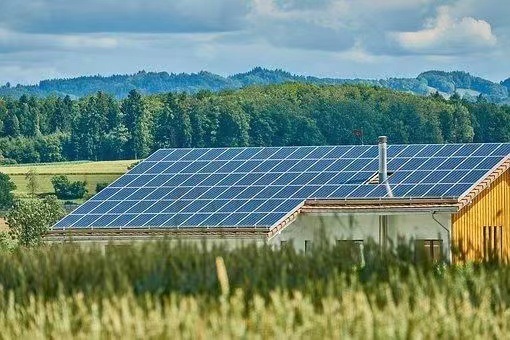Google will invest 1 billion euros in Germany’s clean energy and digital infrastructure.
Shenzhen Airport reduces carbon emissions by over 600,000 tons during the 13th Five-Year Plan

Solar Roof
Google’s investment
Google will invest 1 billion euros in Germany’s clean energy and digital infrastructure
China News Service reported on September 1 that Google Germany announced on August 31 that it will invest in the construction of cloud computing facilities and renewable energy in Hanau, Germany and Berlin-Brandenburg. By 2030, the company plans to invest 1 billion euros in the above-mentioned areas in Germany.
Abu Dhabi launches clean energy certificate
Recently, the Abu Dhabi Ministry of Energy announced that it would issue a clean energy certificate.
As an important part of the latest regulatory policy adjustments, this move aims to accelerate the decarbonization process of the energy industry in Abu Dhabi and allow the renewable energy and nuclear energy industries to trade carbon indicators.
According to the Abu Dhabi Ministry of Energy, the clean energy certificate issued can be used as a certificate for the use of renewable energy to generate electricity.
The certificate will reflect the power generated by each renewable energy power station and 1 MWh of electricity connected to the grid.
At present, obtaining a clean energy certificate has not yet become a mandatory government measure. Renewable energy companies can apply for participation in the program voluntarily, and the clean energy certificates obtained can be traded as carbon credits.
Non-fossil energy steel
The world’s first batch of non-fossil energy steel delivered to the Volvo Group
PR Newswire reported on August 31 that SSAB recently produced the world’s first batch of non-fossil energy steel and delivered it to customers.
This trial production delivery is an important step in the realization of a completely fossil-free energy value chain for steel manufacturing and a milestone in the HYBRIT partnership between SSAB, LKAB and Vattenfall.
SSAB’s Oxelsund plant rolled the first batch of steel produced using HYBRIT (breakthrough hydrogen ironmaking technology) technology in July, that is, using 100% non-fossil-free hydrogen instead of coal and coke for reduction.
The effect is good and the steel is being delivered to the first customer Volvo Group.
13th Five-Year Plan
Shenzhen Airport reduces carbon emissions by over 600,000 tons during the 13th Five-Year Plan
According to a report on September 1, Shenzhen Airport announced that according to statistics, during the “13th Five-Year Plan” period, Shenzhen Airport will reduce carbon emissions by a total of approximately 642,000 tons.
In 2020, Shenzhen Airport Group will achieve a surplus in its carbon quota for the first time, and has passed the International Airport Carbon Emissions (ACA) Level 3 certification, becoming one of the airports with the highest certification level in China.
In recent years, Shenzhen Airport has continued to promote energy-saving and carbon-reduction measures such as reducing aircraft emissions and vehicle emissions.
Sinopec’s 1st PV power station
Sinopec’s first photovoltaic power station connected to the grid in Shanghai
On September 1, Sinopec reported that Sinopec’s first photovoltaic power station in Shanghai was completed and put into use, and it was successfully connected to the grid to generate electricity.
The annual average power generation is estimated to be 400,000 kWh, which can reduce carbon dioxide emissions by 341 tons per year, which is equivalent to planting nearly 19,000 trees.
The photovoltaic power station is constructed by Shanghai Petrochemical, with clean, safe, low cost and high efficiency advantages. It covers an area of about 1,800 square meters and has an installed capacity of 400 kilowatts, which can fully meet the daily operation of the company’s auxiliary electrical equipment.



